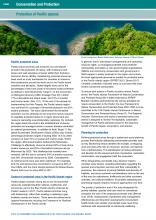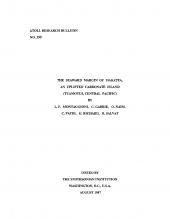Checklist of the shorefishes of Ouvea atoll, New Caledonia

Island and Ocean Ecosystems
Available Online
Kulbickland Michel
,
Williams Jeffrey T
1997
The shorefishes of Ouvea, an isolated atoll in the Loyalty Islands group of New Caledonia, had not been surveyed prior to 1990. An extensive survey was conducted by ORSTOM between 1991 and 1992 to obtain baseline information on the shorefishes. A total of 653 taxa among 72 families are now documented from this area. The most diverse families are the Labridae (69 species), Pomacentridae (58 species), Gobiidae (54 spccies),Serranidae (39 species), Chaetodontidae (31 species) and Apogonidae (28 species). The absence or very low diversity of some families (Clupeidae, Nemipteridae, Siganidae) or genera (Abudefduf, Neopomacentrus) is similar to findings for other isolated islands of the Coral Sea. Of the 653 species recorded from Ouvea, 51 species have not been reported from New Caledonia, a large high island to the South. Only one endemic species, Luzonichthys williamsi, has been recognized among the shorefishes at Ouvea. A number of Pacific Plate endemic species were recorded at Ouvea. which is positioned on the Australasian Plate to the south of the edge of the Pacific Plate. Antennarius duescus, previously known from three specimens taken at the Hawaiian Islands, is recorded from a single specimen taken at Ouvea. Another antitropical distribution pattern is exhibited by Dinemalichthys riukiuensis, which is known to occur at Fiji, Ouvea and Queensland in the South and from Okinawa.




